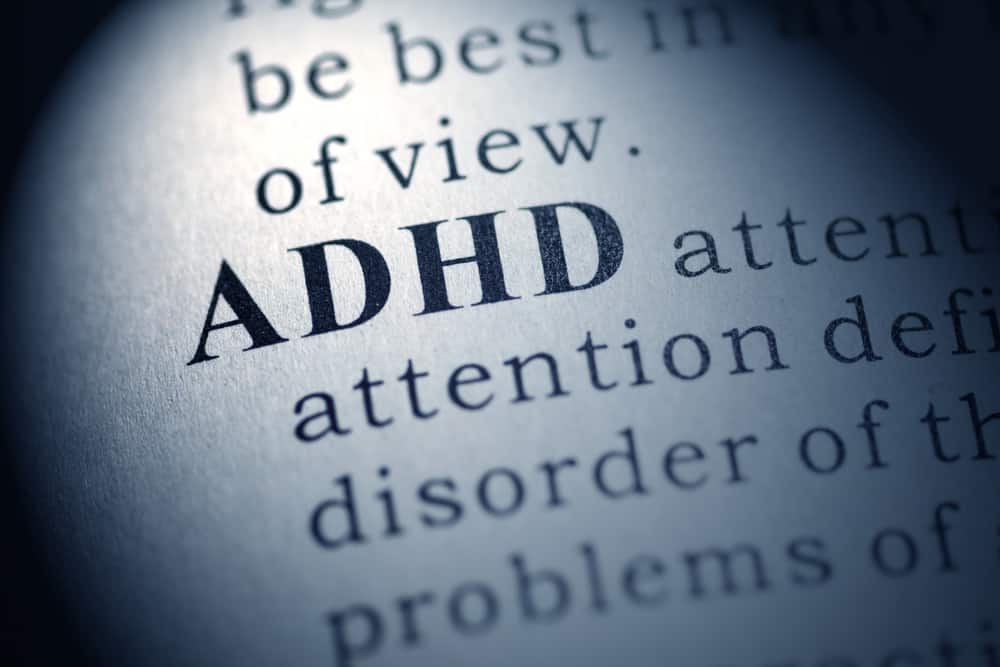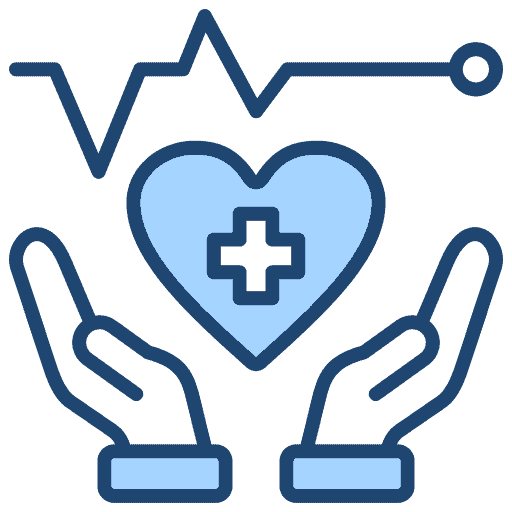
Overview
Most children (and even some adults) occasionally have difficulty focusing. Those who have ADHD continually have problems with concentration, and growing into adulthood doesn’t mean leaving those symptoms behind – the symptoms continue and can even become more severe.
Attention-deficit/hyperactivity disorder (ADHD) is a brain disorder that presents with a pattern of not being able to pay attention and possibly impulsive actions that interfere with normal functioning. Those with ADHD can also be hyperactive, meaning they move about constantly and in situations where it isn’t deemed appropriate (fidgeting, tapping, or talking excessively).
People often use ADD (Attention Deficit Disorder) and ADHD interchangeably – according to the DSM (Diagnostic and Statistical Manual), ADD is ADHD without hyperactivity; however, they are both the same general disorder. DSM referred to ADHD as ADD in the 1980s, then revised it to ADHD, and specified the different types (and one of those types is ADD).
Attention-deficit/hyperactivity disorder (ADHD) is a brain disorder that presents with a pattern of not being able to pay attention and possibly impulsive actions that interfere with normal functioning. Those with ADHD can also be hyperactive, meaning they move about constantly and in situations where it isn’t deemed appropriate (fidgeting, tapping, or talking excessively).
People often use ADD (Attention Deficit Disorder) and ADHD interchangeably – according to the DSM (Diagnostic and Statistical Manual), ADD is ADHD without hyperactivity; however, they are both the same general disorder. DSM referred to ADHD as ADD in the 1980s, then revised it to ADHD, and specified the different types (and one of those types is ADD).
Who can get ADHD?
According to the CDC, the rate of children with diagnosed ADHD has risen in the last decade and a half. In 2003 there were about 4.4 million children and adolescents with ADHD, and by 2016 there were 6.4 million. This means in 2016, about 9% of children (aged 2-17) had been diagnosed with ADHD.
Currently, about 5% of adults have ADHD, showing that ADHD is not limited to adolescents, and continues through a person’s lifespan. Since it’s a neuro-behavioral condition, there’s no cure and children don’t grow out of it.
While previous research showed that it was more likely for males to develop ADHD than females, it seems that males were simply more likely to be referred for treatment, receive accommodations, and join research studies. Typically ADHD in women is under-diagnosed in comparison to men.
Scientists still don’t know the specific causes of ADHD; however, current research has shown that genetics play a significant role. While popular media contributes developing ADHD to diet, parenting, or screen time, research does not verify these claims.
Currently, about 5% of adults have ADHD, showing that ADHD is not limited to adolescents, and continues through a person’s lifespan. Since it’s a neuro-behavioral condition, there’s no cure and children don’t grow out of it.
While previous research showed that it was more likely for males to develop ADHD than females, it seems that males were simply more likely to be referred for treatment, receive accommodations, and join research studies. Typically ADHD in women is under-diagnosed in comparison to men.
Scientists still don’t know the specific causes of ADHD; however, current research has shown that genetics play a significant role. While popular media contributes developing ADHD to diet, parenting, or screen time, research does not verify these claims.
Signs and Symptoms
ADHD presents differently in each case, and is diagnosed based on two main criteria: inattention and hyperactivity/impulsivity. Each category has multiple symptoms, and children presenting with six or more symptoms are diagnosed with ADHD (as long as these symptoms are present in multiple settings and interfere with certain aspects of life, and are not explained by different disorder). Older adolescents and adults must experience at least five symptoms, and have dealt with them for a least 6 months (in addition to the other criteria).
Inattention:
Hyperactivity/Impulsivity:
These symptoms then present in different types: Predominantly Inattentive Presentation (difficulty finishing tasks, paying attention, or following conversations) – this is what’s known as ADD, Predominantly Hyperactive-Impulsive Presentation (fidgeting and talking a lot when it’s inappropriate), and Combined Presentation which has symptoms of both the previous two types.
Since symptoms may change over time, the type of ADHD the patient is experiencing could change as well.
Inattention:
- Careless mistakes due to not giving close attention to details
- Trouble holding attention
- Not listening well
- Doesn’t complete projects/tasks
- Has trouble organizing tasks
- Avoids tasks that require a long period of mental effort
- Often losing daily items (such as books, glasses, etc.)
- Easily distracted
- Forgetful on a daily basis
Hyperactivity/Impulsivity:
- Fidgeting and squirming (such as tapping hands and feet)
- Leaves situations in which remaining seated is expected
- Feeling restless (or running and climbing for children)
- Unable to partake in leisure activities quietly
- Often “on the go”
- Talks excessively
- Blurts out an answer before the question has been fully asked
- Has trouble waiting their turn
- Interrupts others
These symptoms then present in different types: Predominantly Inattentive Presentation (difficulty finishing tasks, paying attention, or following conversations) – this is what’s known as ADD, Predominantly Hyperactive-Impulsive Presentation (fidgeting and talking a lot when it’s inappropriate), and Combined Presentation which has symptoms of both the previous two types.
Since symptoms may change over time, the type of ADHD the patient is experiencing could change as well.
Diagnosis
Similar to other brain disorders, diagnosing ADHD isn’t completed with one simple test. Other disorders must be ruled out (such as anxiety, depression, sleep problems, or learning disabilities). The process also includes a medical exam to rule out physiological reasons for some of the symptoms of ADHD.
A licensed clinician will complete an evaluation, which includes gathering the patient’s full history. A diagnosis of ADHD requires long-lasting evidence of the symptoms impairing the patient’s functioning.
Symptoms can appear in children as young as three, but may be missed entirely in quiet, well-behaved children. Adults with undiagnosed ADHD could have a history of struggling in academics and problems in work and their personal life.
A licensed clinician will complete an evaluation, which includes gathering the patient’s full history. A diagnosis of ADHD requires long-lasting evidence of the symptoms impairing the patient’s functioning.
Symptoms can appear in children as young as three, but may be missed entirely in quiet, well-behaved children. Adults with undiagnosed ADHD could have a history of struggling in academics and problems in work and their personal life.
Treatment
There is currently no cure for ADHD, but treatment options are meant to reduce symptoms in order to improve functioning. Treatments may include medication, therapy, education/training, and could be used in a combination.
Medications help reduce hyperactivity and impulsivity, and work to improve ability to focus. Finding the right dosage and medication can take time, and different things work for different people. All ADHD patients taking medication should be closely monitored by their doctor.
Most commonly, stimulants are prescribed – though it seems like an oxymoron to treat a hyperactivity disorder with stimulants, they actually increase the brain chemicals that help with thinking and attention. Non-stimulants can also work, and are prescribed when stimulants cause too many side-effects or was not effective. Sometimes antidepressants may help symptoms of ADHD, or help improve the side-effects from taking stimulants.
Therapy helps patients and their families cope better with the everyday problems of ADHD – behavioral therapy helps a patient control and change their own behavior. Cognitive behavioral therapy teaches mindfulness techniques so patients can be more aware of their own thoughts to improve focus.
Education or training is used to help the patient and their family better understand the disorder, and how to cope while supporting the patient. This could be learning better management techniques (making lists, keeping routines) for both the patient and their family.
Staying or becoming healthy is a final addition to medications and/or therapy – eating a healthy diet and exercising may help some symptoms improve.
Medications help reduce hyperactivity and impulsivity, and work to improve ability to focus. Finding the right dosage and medication can take time, and different things work for different people. All ADHD patients taking medication should be closely monitored by their doctor.
Most commonly, stimulants are prescribed – though it seems like an oxymoron to treat a hyperactivity disorder with stimulants, they actually increase the brain chemicals that help with thinking and attention. Non-stimulants can also work, and are prescribed when stimulants cause too many side-effects or was not effective. Sometimes antidepressants may help symptoms of ADHD, or help improve the side-effects from taking stimulants.
Therapy helps patients and their families cope better with the everyday problems of ADHD – behavioral therapy helps a patient control and change their own behavior. Cognitive behavioral therapy teaches mindfulness techniques so patients can be more aware of their own thoughts to improve focus.
Education or training is used to help the patient and their family better understand the disorder, and how to cope while supporting the patient. This could be learning better management techniques (making lists, keeping routines) for both the patient and their family.
Staying or becoming healthy is a final addition to medications and/or therapy – eating a healthy diet and exercising may help some symptoms improve.
Sources & More Information
Attention Deficit Disorder Association (ADDA), “ADHD: The Facts” https://add.org/adhd-facts/
Centers for Disease Control and Prevention, “Attention-Deficit/Hyperactivity Disorder (ADHD)” https://www.cdc.gov/ncbddd/adhd/facts.html
“Data & Statistics” https://www.cdc.gov/ncbddd/adhd/data.html National Institute of Mental health, “Attention-Deficit/Hyperactivity Disorder” https://www.nimh.nih.gov/health/topics/attention-deficit-hyperactivity-disorder-adhd/index.shtml
Centers for Disease Control and Prevention, “Attention-Deficit/Hyperactivity Disorder (ADHD)” https://www.cdc.gov/ncbddd/adhd/facts.html
“Data & Statistics” https://www.cdc.gov/ncbddd/adhd/data.html National Institute of Mental health, “Attention-Deficit/Hyperactivity Disorder” https://www.nimh.nih.gov/health/topics/attention-deficit-hyperactivity-disorder-adhd/index.shtml


